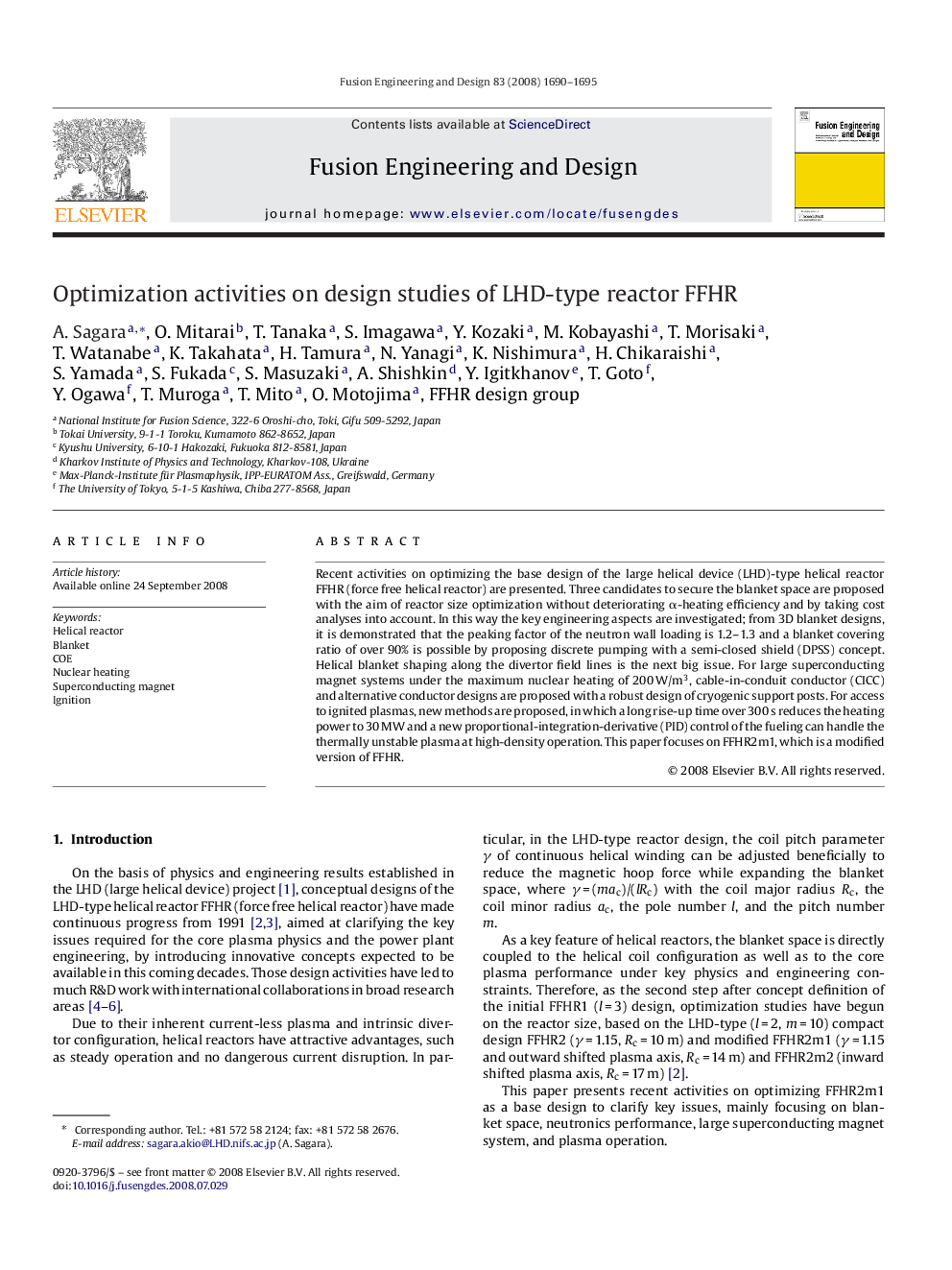| Article ID | Journal | Published Year | Pages | File Type |
|---|---|---|---|---|
| 272781 | Fusion Engineering and Design | 2008 | 6 Pages |
Recent activities on optimizing the base design of the large helical device (LHD)-type helical reactor FFHR (force free helical reactor) are presented. Three candidates to secure the blanket space are proposed with the aim of reactor size optimization without deteriorating α-heating efficiency and by taking cost analyses into account. In this way the key engineering aspects are investigated; from 3D blanket designs, it is demonstrated that the peaking factor of the neutron wall loading is 1.2–1.3 and a blanket covering ratio of over 90% is possible by proposing discrete pumping with a semi-closed shield (DPSS) concept. Helical blanket shaping along the divertor field lines is the next big issue. For large superconducting magnet systems under the maximum nuclear heating of 200 W/m3, cable-in-conduit conductor (CICC) and alternative conductor designs are proposed with a robust design of cryogenic support posts. For access to ignited plasmas, new methods are proposed, in which a long rise-up time over 300 s reduces the heating power to 30 MW and a new proportional-integration-derivative (PID) control of the fueling can handle the thermally unstable plasma at high-density operation. This paper focuses on FFHR2m1, which is a modified version of FFHR.
